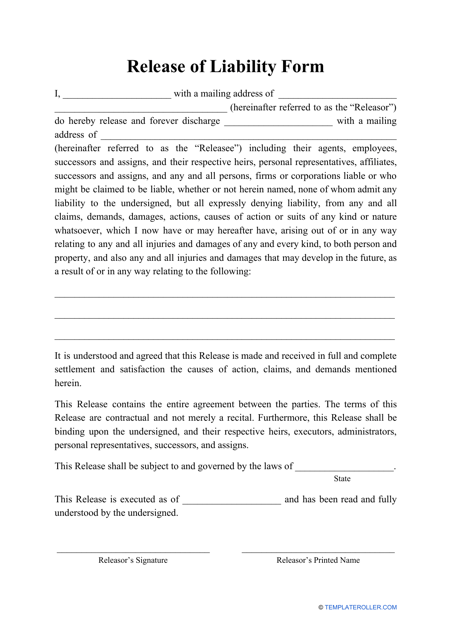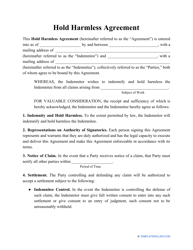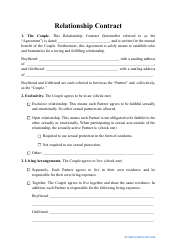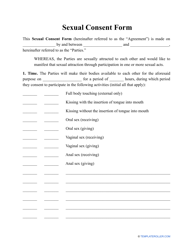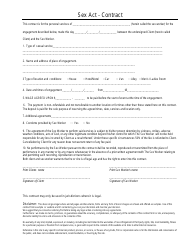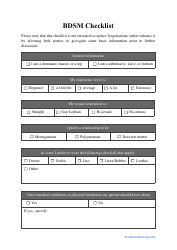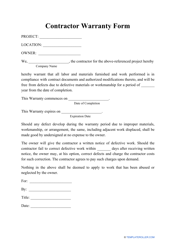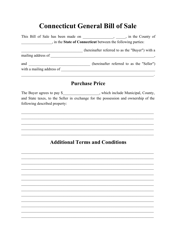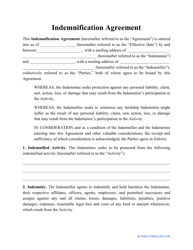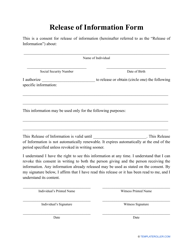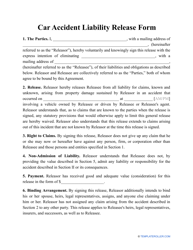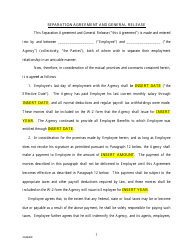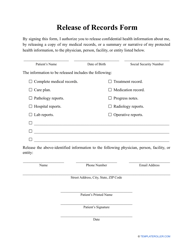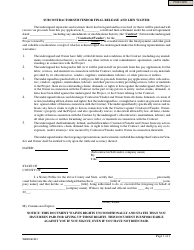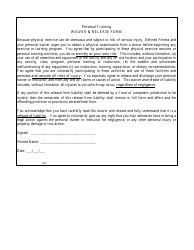Release of Liability Form
What Is a Release of Liability Form?
A Release of Liability Form is a document that contains a statement under which one party (called the releasor) waives the liability of another party (called the releasee). The purpose of the document is to free a particular party from certain types of responsibilities cleared in the document.
Alternate Names:
- Release of Liability Waiver;
- General Release of Liability Form.
A Release of Liability is commonly used in situations with a predetermined level of risk. They can include the following:
- Various Activities. Some water sports, zip-lining, and other types of extreme sports require their attendants to sign a Release of Liability Form, under which they are not liable for any harm that the attendants might receive when doing the activity.
- Information Releases. In this case, the waiver allows different entities to release information about individuals without being responsible for the consequences that might appear. It can be applied to medical, financial, and other types of information.
- Personal Injuries. When an individual is injured they can sign a liability waiver where they will be legally bound to not sue the other party in exchange for a certain amount of financial compensation that will cover their medical expenses.
A printable Release of Liability Form can be downloaded through the link below.
What Is a Release of Liability for a Car?
Another common type of liability waiver is a Release of Liability for a car. It can be used when an individual sells their car and wants to notify their local Department of Motor Vehicles (DMV) that they do not own this vehicle anymore and are not liable for any damage that it may cause after it has been sold.
Many states have their own DMV Release of Liability Form that is supposed to be used when individuals want to make a notification about it. So, before submitting the document, individuals should check with their local DMV by contacting them or visiting a nearby office.
The form itself does not require individuals to provide a lot of details, it only includes information about the vehicle, information about the buyer, and information about the seller. To get themselves acquainted with the document they can visit the official website of the state's DMV.
How to Write a Release of Liability?
The content of the document depends on the circumstances of the situation in which it will be used. A general Release of Liability Form can contain parts, which include the following:
- Information About the Parties. In the first part of the document, the parties can state their names and addresses. The address should contain the zip code, state, city, street name, and building number. This information is needed for identification purposes.
- Description of the Subject. Here the parties should designate which kinds of liability the releasee is free from, and under which circumstances the releasor waives the releasee's responsibility. It can be presented as a list of situations that this document is applicable for, or it can record types of liabilities that the releasee can be sued for.
- Payment for the Release. If the parties have agreed on it, they should include a statement that regulates the payment that the releasee is supposed to pay the releasor in exchange for the release of liability. They should state its amount and when and how it should be paid.
- Contact Information. For notification purposes, the parties should state their postal addresses, telephone numbers, and emails. It will be useful in case one party will need to urgently contact the other party, for any official notifications, and for the letters concerning the subject of the document.
- Governing Law. Here the parties enter the state law in accordance with which the agreement will be construed and governed by.
- Signatures. To express their consent with the contents of this document the parties should sign the document and state that they are signing it fully lucid and under their own free will.
Parties can include other sections in the document, such as jurisdiction, severability, representatives, amendments, etc.
Related Forms and Topics:
